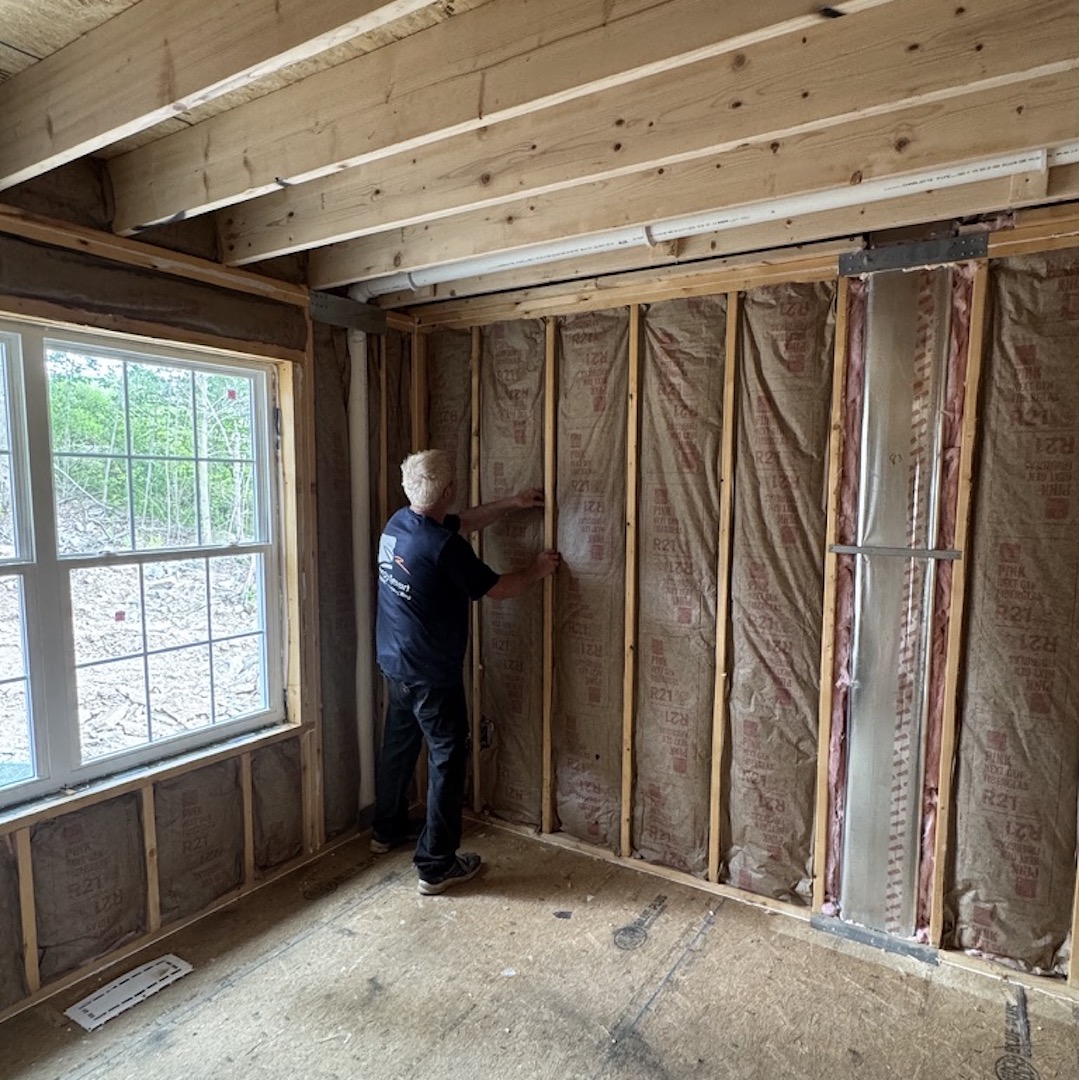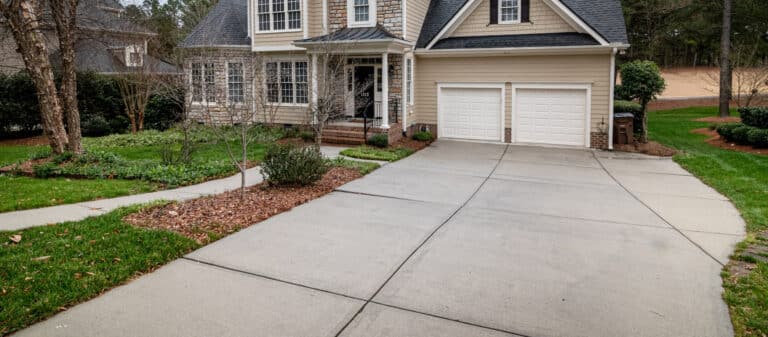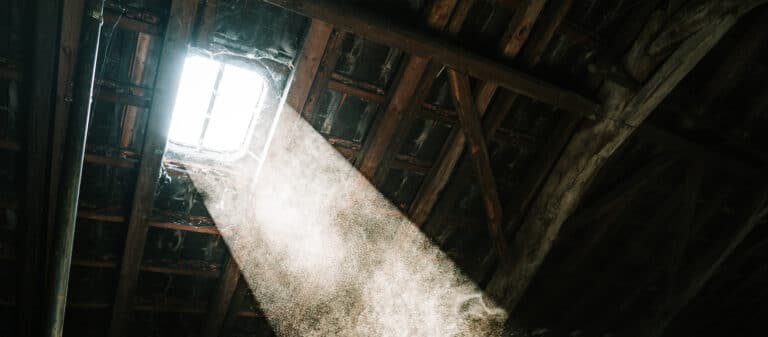According to a Building America Report Study, uninsulated basement walls can account for up to a ⅓ of total heat loss in the average home.
In addition to dealing with heat loss from your basement walls, these gaps in your exterior can allow cool air to seep in and cause your HVAC system to work harder.
Basement insulation is often worth it for homeowners who want to cut down on their utility bills, especially in regions like Northeast Pennsylvania that deal with harsh winters.
Walls, ceilings, crawl spaces, and all nooks and crannies should be insulated to achieve the most savings, but this requires a strategic approach.
This guide will discuss the benefits of basement insulation and walk you through step-by-step, with some tips to properly insulate your basement.
Why Insulate Your Basement?
Crawl spaces and basements are a common feature across much of Northeast Pennsylvania, but a majority of them are underinsulated.
Basements are often a weak point in a home’s thermal envelope, allowing cold air to seep in during the winter and trap humidity in the summer.
While most people are familiar with the concept that heat rises, few are as familiar with the “stack effect.” As hot air exits the home through the basement, this imbalance in air pressure actually causes your home to suck in cool air through the basement.
Therefore, an uninsulated basement doesn’t just allow hot air to escape; it also forces cool air in to compensate for an underinsulated attic.
Insulating your basement can lead to a wide range of benefits, including:
- Lower Energy Costs: By reducing heat loss through the basement walls or the stack effect, your HVAC system doesn’t have to work as hard.
- Increased Comfort: Cool floors and drafts can be uncomfortable, especially in a finished basement.
- Moisture Control: Proper insulation helps manage condensation and prevents mold growth during humid summer days.
- Higher Resale Value: Energy-efficient upgrades are in popular demand, increasing your resale value.
- Extended Living Space: If you plan to finish your basement, insulation is essential to make it comfortable year-round.
Where to Insulate in the Basement
A key consideration for insulating your basement is knowing where to insulate to derive the most value. For example, rim joists can often be completed DIY and save you money, while floors and walls may require professional assistance, but will give you the most bang for your buck.
Let’s compare some common areas that you will need to insulate to totally envelope your basement.
- Basement Walls: Insulating the walls creates a thermal barrier between your living space and the cold ground outside. In climates like Pennsylvania’s, rigid foam boards or spray foam are preferred over fiberglass batts, since they resist moisture and mold growth.
- Basement Floors: While less common, insulating the floor can make a dramatic difference in comfort, especially if you use the basement as a living space. Rigid foam board and blown-in fiberglass beneath subfloor systems are the most common approaches.
- Rim Joists: The rim joist (where your basement walls meet the first-floor framing) is a major source of air leaks. Spray foam insulation and rigid foam boards work best here, sealing small cracks and preventing drafts.
- Crawl Spaces: If you have a partial basement or crawl space, insulating it helps keep the upper floors warmer and reduces the risk of frozen pipes.
Best Types of Basement Insulation
Not all insulation is created equal, especially when it comes to insulating your basement. Choosing the right type of insulation depends on your budget, moisture concerns, and whether your basement is finished or unfinished.
Rigid Foam Board
Rigid foam (such as XPS or polyisocyanurate) is one of the most popular basement insulation materials. It resists moisture, provides high R-values, and can be installed directly against foundation walls in between studs.
However, this material is not flexible, and you will most likely have some gaps that need to be sealed with a spray foam.
Spray Foam
Spray foam offers excellent air sealing and moisture resistance. Open-cell foam, in particular, is great for basements due to its high R-value that meets EnergyStar recommendations for the region and its ability to act as a vapor barrier. This spray foam is considered the strongest form of insulation on the market and lasts for several decades.
Fiberglass Batts
While affordable, fiberglass is not ideal for basements unless paired with a vapor barrier. It absorbs moisture, which can lead to mold problems. It’s better suited for interior stud walls if the basement is already dry.
Step-by-Step: How to Insulate Your Basement
Basement insulation projects may be easier than attic projects to DIY, though we strongly recommend hiring a professional to achieve the best results. Follow these steps to develop a plan for insulating your basement and meeting your budget.
Step 1: Inspect for Moisture Problems
Before insulating, check for leaks, cracks, or dampness. Insulating over wet walls can trap moisture and lead to mold. Fix drainage issues, install a sump pump if needed, and ensure gutters/downspouts direct water away from the foundation.
Moisture contact with fiberglass or cellulose can lead to mold, quickly flushing all the money you invest in new insulation down the drain.
Step 2: Decide on Insulation Material
Depending on what areas of your basement you plan to insulate, it may make sense to use different materials for each task. For example, rigid foam board and spray foam will be best used for ceiling joists, rim joists, and crawl spaces, while spray foam should be used exclusively for basement walls to achieve the most uniform coverage.
Step 3: Seal Air Leaks
Use spray foam or caulk to seal cracks, rim joists, and penetrations before adding insulation. If you’re using rigid foam board or have existing fiberglass batts, this step can help seal any gaps between the wood and your insulation.
Step 4: Install Insulation
At this stage, we highly recommend having a professional install your insulation to avoid moisture issues and ensure the most uniform application. However, if you are installing insulation yourself, you will need a few tools.
For example, rigid foam board panels will need to be measured and cut to size to slide between joists and seams.
Spray foam requires a specialized machine that may be available for rent at your local hardware store, though it will take some time and expertise to achieve proper application.
Step 5: Add a Vapor Barrier (If Needed)
Depending on your climate and insulation type, a vapor barrier may be necessary to prevent condensation. This will help prevent moisture issues in the summer, as June through August can become very humid in Northeast Pennsylvania.
Step 6: Finish Walls (Optional)
If you installed insulation between wall studs or against your foundation walls, you can seal these cavities and help finish your basement by hanging drywall.
Common Mistakes to Avoid
Installing insulation in basements comes with moisture risks, especially if you use the wrong insulation or don’t apply it correctly. Here are a few common mistakes we see homeowners make when installing basement insulation.
- Ignoring Moisture Issues: Insulating a damp basement without fixing leaks first leads to mold and ruined insulation.
- Using Fiberglass Against Foundation Walls: Fiberglass absorbs moisture and deteriorates quickly in basements, so we tend to avoid it for basements.
- Skipping Rim Joist Insulation: Ignoring joists can make all of your other basement insulation projects useless, as heat will escape through this open cavity regardless.
- Not Sealing Seams: Gaps between foam boards or around joists can negate the benefits of insulation.
Is Basement Insulation Worth It Financially?
The upfront cost of insulating a basement is $2600 nationally, but it can range depending on the size, materials, and whether you hire a contractor.
While that may sound steep, consider that energy savings can reach 10–20% annually on heating and cooling bills. In just a few years, your basement insulation project can pay for itself.
Additionally, basement insulation adds value to your home, especially if you plan to finish your basement.
However, some things can’t be measured by money, and that’s comfort. Whether you use your basement as an entertainment space or workshop, having a warm and comfortable basement year-round is worth it for many homeowners.
FAQs
Do I need to insulate basement walls if the space isn’t finished?
Yes. Even if you don’t plan to use your basement as a living space, insulating the walls helps prevent heat loss, moisture issues, and frozen pipes.
What R-value should I use for basement insulation in Pennsylvania?
The Department of Energy recommends R-10 to R-15 for basement walls in colder climates like Pennsylvania. Open-cell spray foam or rigid foam panels typically meet these requirements.
Can I insulate my basement myself?
DIY insulation is possible with rigid foam or fiberglass batts. However, for spray foam or basements with moisture issues, hiring a professional is recommended.
Will insulating my basement help with humidity?
Yes, especially when combined with proper moisture control measures. Insulation helps regulate temperature and reduces condensation, but you may also need a dehumidifier.
Is a vapor barrier always necessary?
Not always. It depends on the insulation type and climate. Closed-cell spray foam doubles as a vapor barrier, while fiberglass typically requires one.











